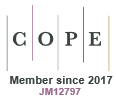Just Accepted
This article has been peer reviewed and accepted for publication. It is in production and has not been edited, so may differ from the final published form.
Canopy and surface fuels measurement using terrestrial lidar single-scan approach in the Mogollon highlands of Arizona
Abstract
Background Fuel monitoring data is essential to evaluate wildfire risk, plan management activities, and evaluate fuel treatment effects. Terrestrial lidar is a field-based 3D scanning technology with great potential to reduce labor-intensive field measurements and provide new depths of vegetation structure data. Aims To facilitate the integration of terrestrial lidar into fuel monitoring programs, we developed an easy-to-use Python program, model, and training process that produce canopy fuel, surface fuel, and terrain metrics commonly used in fire behavior and fire risk modelling. Methods We estimated canopy and surface fuel metrics from terrestrial lidar using a semi-empirical model incorporating physically-based modelling of leaf area density and occlusion and a non-destructive model calibration process leveraging Bayesian regression. We compared lidar-derived fuel estimates to conventional fuel estimates across diverse conditions in semi-arid shrubland, woodland, and forest in Arizona. We also compared estimates using single- and multiple-scan modes. Key results In single-scan mode, our lidar-derived fuel estimates were significantly related to conventional fuel estimates of total canopy fuel load (R2=0.74, RMSE=0.09 kg/m2), maximum canopy bulk density (R2=0.54, RMSE=0.03 kg/m3), downed surface fuel load (R2 = 0.55, RMSE = 0.24kg/m2), and standing surface fuel load (R2 = 0.53, RMSE = 0.03kg/m2). Implications Our methods provide opportunities to increase the scalability of fuel monitoring to better understand wildfire risk and treatment effectiveness.
WF24221 Accepted 06 May 2025
© CSIRO 2025



